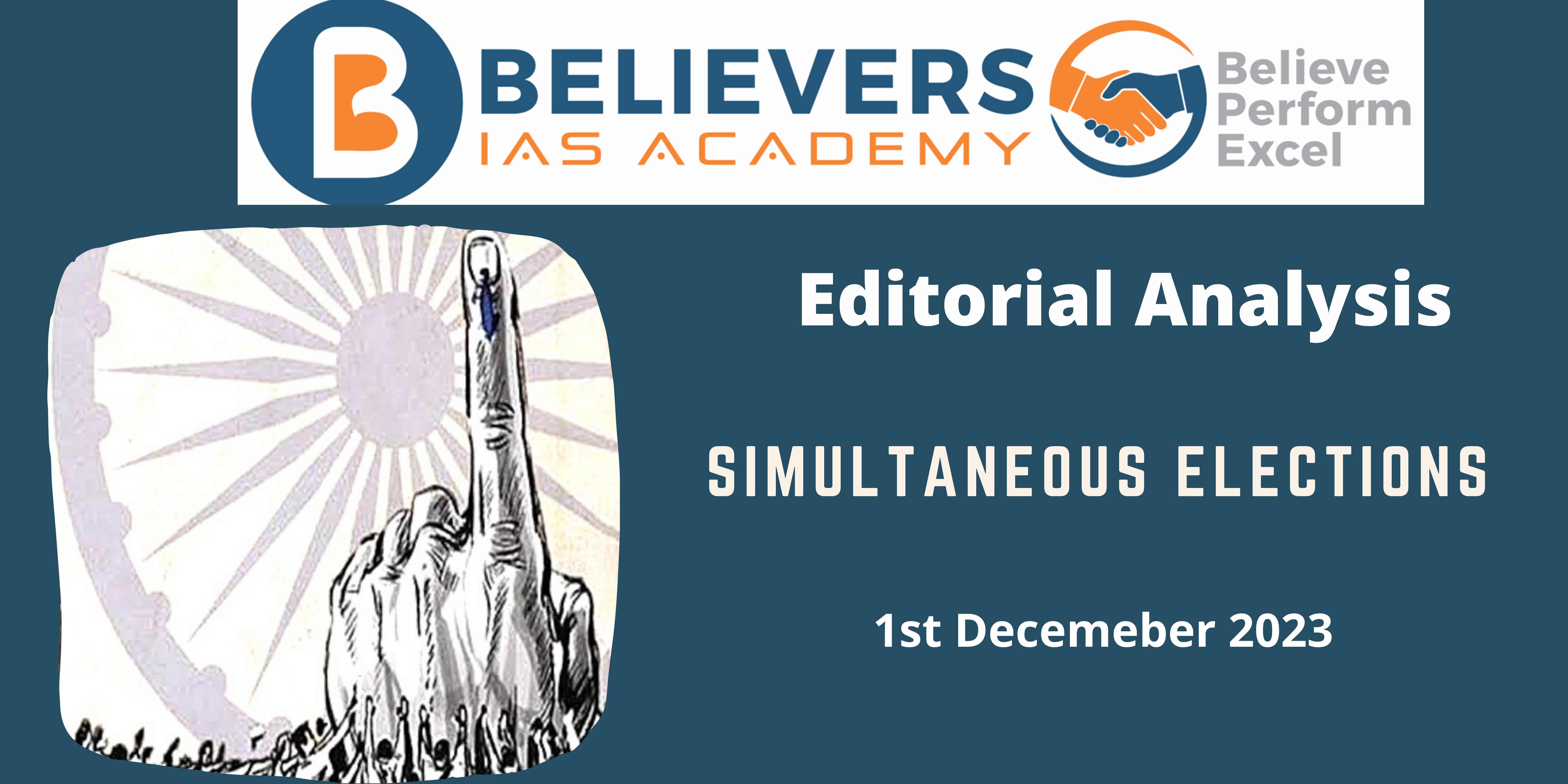Simultaneous Elections
Context:
The Union Government’s recent notification on the formation of a six-member panel to explore the feasibility of simultaneous elections has reignited a longstanding debate. Simultaneous elections for the Lok Sabha, State assemblies, and local bodies were a norm during the initial four general elections but later gave way to a fragmented election cycle. The BJP has been advocating for this shift since 2014, citing benefits like cost reduction, efficient use of resources, and curbing the impact of divisive politics. However, concerns about its impact on regional issues, federal spirit, and practicality have been raised.
Relevance:
GS – 2 (Federalism, Elections, Government Policies & Interventions)
Prelims:
Simultaneous Elections, Lok Sabha, Rajya Sabha, Election Commission of India, Representation of the People Act, 1951.
Mains Question:
Discuss the rationale behind the demand for simultaneous elections in India, highlighting the arguments in favor and against. Assess the legal and constitutional challenges associated with implementing simultaneous elections and suggest the way forward. (250 words)
Dimensions of the Article:
- Arguments in Favor
- Arguments Against
- Legal and Constitutional Challenges
Arguments in Favor:
- Financial Efficiency: Advocates argue that holding simultaneous elections would save significant public funds and human resources as only one electoral roll and one deployment of security forces would be needed.
- National Security: The current staggered election cycle puts a strain on national security and law enforcement due to prolonged deployment and transfers of officials, affecting the administration’s efficiency.
- Developmental Implications: Simultaneous elections are believed to promote development by minimizing disruptions caused by the enforcement of the code of conduct, allowing for ongoing and new projects.
Arguments Against:
- Federal Spirit: Critics view the move as against the federal spirit, lacking wider consultation with States, especially those not governed by the BJP.
- Threat to Regional Issues: Simultaneous elections may sideline local and regional issues, creating a ‘national constituency phenomenon’ favoring larger parties.
- Cost Implications: Contrary to the claim of cost savings, opponents argue that large-scale procurement of Electronic Voting Machines (EVM) and Voter Verifiable Paper Audit Trail Machines (VVPAT) would be necessary.
Legal and Constitutional Challenges:
- Amendments Required: Implementing simultaneous elections demands amendments to at least five articles in the Constitution related to the duration and dissolution of the Lok Sabha and State Assemblies.
- Complex Legislative Process: These amendments necessitate two-thirds majority support in both Houses of Parliament and ratification by at least half of the State Legislatures under Article 368.
- Judicial Review: The proposal’s linkage with local bodies’ elections, governed by State laws, adds complexity, and judicial review may be a significant hurdle.
Way Forward:
- Realistic Approach: Given the complexity, a phased approach focusing on simultaneous Lok Sabha and Assembly elections could be more feasible.
- Wider Consultation: Successful implementation requires broader consultations with political parties and States to address concerns and build consensus.
- Judicious Amendments: Addressing legal and constitutional challenges demands a careful legislative process, considering the federal structure and judicial scrutiny.
Conclusion:
The call for simultaneous elections in India is laden with challenges and merits. Striking a balance between financial efficiency, national security, and democratic values is essential. A phased approach with comprehensive consultations appears pragmatic, ensuring that the move aligns with the diverse socio-political landscape of the country. While the debate continues, a nuanced and inclusive decision-making process is crucial for any potential shift towards simultaneous elections.




